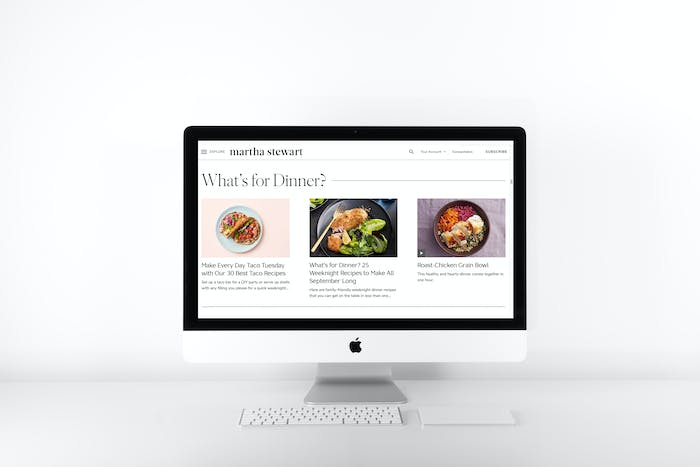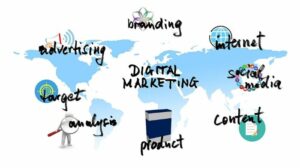Are you looking for a step-by-step guide to design the perfect website? The world of website design can be intimidating and overwhelming, but it doesn’t have to be! With a few simple steps and an organized approach, anyone can create a well-designed website. From selecting a domain name to choosing the right hosting plan, this guide offers helpful tips and advice to help you create a website that looks great and functions even better. Whether you’re a beginner or a more experienced designer, you’ll find useful information to help you develop a website that stands out and meets your needs. So, let’s get started and design the perfect website!
Choosing a domain name
A domain name is the website address that people will visit to find your site. It’s also the name that appears in search engine results. Before you start building your website, you’ll have to choose a domain name that best represents your brand. Your domain name should be easy to remember, intuitive, and relevant to your industry and target audience. A few considerations when choosing a domain name include length, character types, and availability. A long domain name might be memorable, but it could be hard to spell and difficult to use in conversation. Likewise, a short domain name might be easy to use, but it might not be memorable. And, you’ll want to avoid domain names with special characters, like hyphens. They can be difficult for others to type and remember.
Selecting a hosting plan
A hosting plan is a service that hosts your website on the Internet. It’s necessary to have your website hosted on a hosting plan so that people can find and access it. You can choose a hosting plan based on your needs and be sure that it’s able to support your website design, traffic, and desired features. You can host your website on a variety of services, including self-hosting, cloud hosting, and managed hosting. Self-hosting is when you store your website’s data on your own computer, which is usually more reliable and secure. Cloud hosting is when you store your website’s data on a remote server that’s managed by a third party. Managed hosting is when you host your website on a remote server that’s managed by the same company that provides your hosting plan.
Designing the website layout
A website layout refers to how the layout of your website appears and how your website’s pages and elements are organized. When creating your website layout, you should consider design elements like color schemes, typography, images, and content layout. To start, select a color scheme and stick to it. This will help with branding and make the website easier to navigate. Next, use typography to guide your visitors through your content and emphasize key points. You can also consider adding images to break up long paragraphs of text.
Choosing the right themes and templates
A theme or template is the visual design that accompanies your website’s content. When choosing a theme or template for your website, you have a few options. You can choose a pre-made theme that’s available on a website like ThemeForest or CreativeMarket. Or, you can hire a designer to create a custom theme for your website. If you decide to go with a pre-made theme, you’ll want to make sure it’s scalable and flexible enough to grow with your business. Make sure it’s easy to customize, too. If you’d rather hire a designer to create a custom theme, you’ll want to ask the designer a few questions, such as how long the process will take and their design process.
Optimizing for mobile devices
More people are accessing the internet through mobile devices, so it’s important to optimize your website for mobile devices, too. There are a few ways you can do this, including designing your website with responsive design, adding meta tags, and using alt tags. To design your website with responsive design, make sure your website is flexible and fluid enough to be displayed on any device. This includes things like font size, image size, and general layout. You can also add meta tags to your website to tell search engines what your website is about. These meta tags should include relevant keywords and be written for both desktop and mobile devices.
Writing content for your website
Writing engaging and informative content for your website is one of the most important steps in the design process. According to Hubspot, 85% of online users say that clear and useful content is the most important factor when evaluating a website. Because people spend an average of just 6 seconds on your website, you need to make sure your content is clear and concise. Start by creating an outline for each page of your website, including the homepage. Then, write your content, keeping these things in mind: Include a call-to-action at the end of each post to drive conversion, write in an informal and friendly tone, and include useful information with statistics and facts.
Adding multimedia elements
Adding multimedia elements to your website will make your content more engaging, and it can also help you meet your website goals. You can add multimedia elements like images, videos, podcasts, or infographics. You can use these elements to explain a product, provide helpful information, or show behind-the-scenes action. You can add multimedia elements to your website by creating a blog, adding images to product pages, or creating an infographic. Start by choosing which of these multimedia elements will best meet your website goals. Then, create the content and add it to your website. Make sure to add it to your website’s design, too.
Testing and debugging
Testing and debugging are important parts of the website design process. Testing involves checking your website for broken links, broken images, and other problems that might keep people from visiting your site. Debugging is when you make corrections to these problems and ensure everything is working properly. To test and debug your website, use a website crawler like Screaming Frog to find broken links and images. Then, fix the problems and add missing information, like titles, alt tags, and descriptions. You can also use tools like Google Analytics, Google Search Console, and Google Keyword Planner to analyze your website’s traffic, find broken links, and check for problems.
Securing your website
You don’t want hackers sneaking into your website and stealing your data, so it’s important to properly secure your website. You can start by hiring a professional website designer who knows how to secure websites. You can also protect your website by installing a firewall and antivirus software, keeping your website updated, and using strong passwords. You can also add an encryption certificate to your website, which tells visitors that your website is secure. There are two types of certificates: SSL and TLS. The SSL is more powerful and can be used to encrypt traffic between browsers and servers.
Launching your website
When your website design is complete, it’s time to go live! Before you do, make sure you have everything in place, including hosting, a domain name, and social media channels. You can also promote your new website with a launch party or blog post. To help visitors find your new website, consider purchasing advertising like Google AdWords or Facebook Ads. You can also submit your website to search engine listings like Google and Bing Webmaster Tools. Your website is the online hub for your business. It’s the place where you connect with new customers and engage with your current ones. Now you know how to design the perfect website, so get started on creating a website that will engage your audience and help grow your business.




